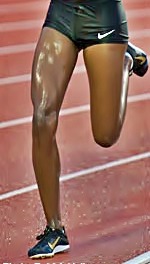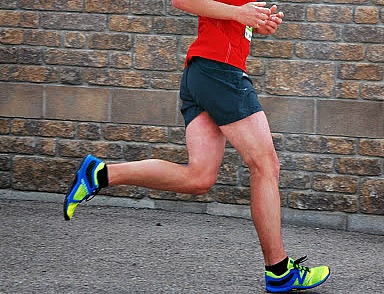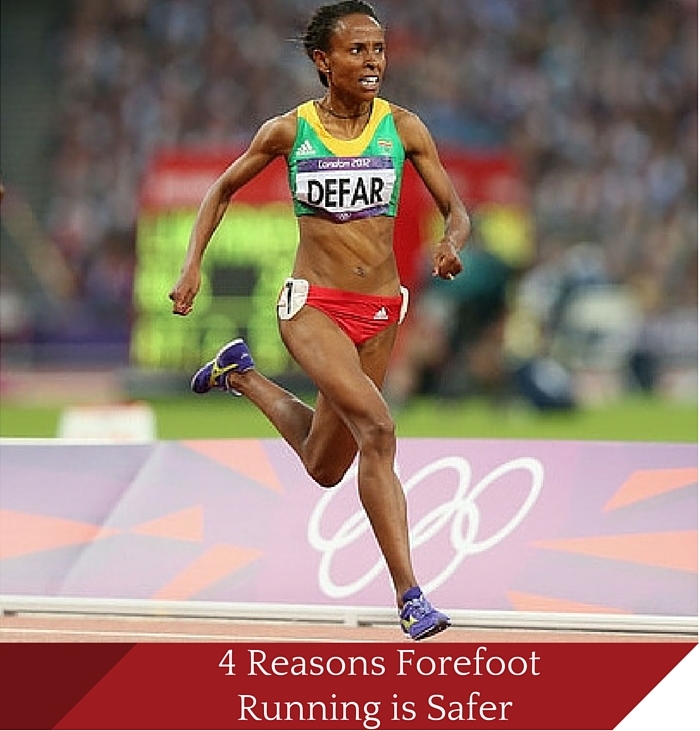How to make running safer is easier than you think. The best solution to all your running-related problems is forefoot running. Why does running foot strike matter so much though?
Foot strike in running determines impact –the magnitude of the ground reaction force– a force confirmed as one of the underlying causes of most running injuries. Therefore, the fundamental ingredient for injury prevention in running is to reduce this force by landing on your forefoot while you run.
4 Reasons Why Forefoot Running is Safer Than Heel Striking
Forefoot running is safer than heel striking because it significantly reduces the vertical ground reaction force impact peak (also known as the heel strike transient). This impact peak is a variable of the ground reaction force that occurs only if the first part of the foot to strike the ground is the heel (i.e. heel strike) during running.
A study by Gruber et al., took it one step further and compared the impact shock frequency components and attenuation in heel strike and forefoot running, and unsurprisingly, found that forefoot running was safer than heel strike running on many levels:
1. Less Peak Positive Tibial Acceleration
Forefoot running reduces tibial acceleration by reducing heel vertical velocity, stride length, knee extension at touchdown and leg angle [1, 2], suggesting that forefoot running may prevent shin splints and shin fractures.
2. Less High & Low Peak Power Frequency Range of the Tibia
Forefoot running reduces the high peak power frequency range on the tibia thereby lowering the vertical ground reaction force and rapid deceleration of the foot and leg following initial ground contact [2-4]. Kinematically, this is how forefoot running reduces the braking effect that is produced in heel strike running.
3. Better Joint Geometry Characteristics

Joint geometry at touchdown can create conditions that affect impact during running.
In forefoot running, the foot-ankle complex is plantarflexed, allowing a safer, more cushy foot-ground collision which in turn, reduces peak tibial acceleration magnitude [2].
Also, ankle plantarflexion at touchdown in forefoot running allows for better ankle compliance which may help lower tibial deceleration rates after ground contact.
4. Less Shock for Body to Absorb
Forefoot running is associated with less shock attenuation frequency because as mentioned above, foot-ground collision is lighter [5-7]. Therefore, the body is exposed to less shock in forefoot running which spares the body of investing extra energy into shock attenuation.
The Take Home Message
Heel strike running harbors impact parameters linked to most running injuries that are classified as repetitive stress injuries.
Over time, the high impact nature of heel strike running exceeds the capacity and resiliency of tissues and mechanisms of the body responsible for attenuating shock.
And, it is unlikely that cushioned running shoes absorb impact because not only do they encourage heel strike, but running injury rates remain steadily high.

In the realm of statistics, runners who are forefoot strikers have fewer injuries than those who heel strike. To enhance the resiliency on the body’s shock attenuation mechanisms, the simple solution is to change footfall pattern to that of a forefoot running style.

Patellofemoral Pain Syndrome – Many runners suffer this dreaded injury, but many runners don’t know why. This article covers the main cause of knee injury in runners.
Achilles Heel – Found out why heel strike running is such a daunting task for the Achilles tendon, resulting in injury to the tendon.
Eccentric Exercises – We often hear about eccentric exercises, but you can achieve them just by running barefoot; find out how.
Forefoot Shoe Review – Read my review on the FeelMax Osma 2, an under-appreciated forefoot running shoes that is a great tool to help you mechanically run your best.
Barefoot Running – Why every runner needs to try it and needs to add it to their training regiment.

References:
[1]. Clarke TE, Cooper LB, Hamill CL, Clark DE. The effect of varied stride rate upon shank deceleration in running. J Sports Sci 1985;3:41 e 9.
[2]. Lieberman DE, Venkadesan M, Werbel WA, Daoud AI, D’Andrea S, Davis IS, et al. Foot strike patterns and collision forces in habitually barefoot versus shod runners. Nature 2010;463:531 e 5.
[3]. Bobbert et al. Calculation of vertical ground reaction force estimates during running from position data. J Biomech, 1991, 24, 1095-105.
[4]. Chu ML, Yazdani-Ardakani S, Gradisar IA, Askew MJ. An in vitro simulation study of impulsive force transmission along the lower skeletal extremity. J Biomech 1986;19:979 e 87.
[5]. Derrick TR, Hamill J, Caldwell GE. Energy absorption of impacts during running at various stride lengths. Med Sci Sports Exerc 1998;30:128 e 35.
[6]. Gruber et al. Impact shock frequency components and attenuation in rearfoot and forefoot running. J Sport Health Sci, 2014, 3, 113-21.
[7]. Mercer JA, Vance J, Hreljac A, Hamill J. Relationship between shock attenuation and stride length during running at different velocities. Eur J Appl Physiol 2002;87:403 e 8.
Bretta Riches
BSc Neurobiology; MSc Biomechanics candidate, ultra minimalist runner & founder of RunForefoot. I was a heel striker, always injured. I was inspired by the great Tirunesh Dibaba to try forefoot running. Now, I'm injury free. This is why I launched Run Forefoot, to advocate the health & performance benefits of forefoot running and to raise awareness on the dangers of heel striking, because the world needs to know.
Latest posts by Bretta Riches (see all)
- Are Minimalist Shoes Good for Seniors? YES! - 14/04/2024
- BIG Deals On Running Gear And More! - 09/04/2024
- Why Are My Feet Tired After Running? - 04/04/2024


Leave a Reply